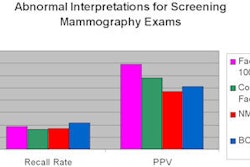The incidence of pediatric stroke may be seriously underreported in the U.S., according to California researchers who reviewed radiology data to develop what they believe is a better estimate of stroke incidence among infants and children. Their results were published online September 17 in the journal Stroke.
The incidence of pediatric stroke in the U.S. has been estimated at between 0.54 and 1.2 cases per 100,000 children, per year. But these estimates are based on how stroke cases are identified by coding professionals who employ the International Classification of Diseases, 9th Revision (ICD-9) system, which has been shown to have variable accuracy. In addition, coding professionals working on pediatric cases may not be used to applying adult-based stroke codes to children.
To determine the accuracy of existing estimates for pediatric stroke, researchers from the University of California, San Francisco (UCSF) searched both ICD-9 codes and radiology reports. They found that the radiology-based searches indicated a pediatric stroke incidence that may actually be two to four times higher than previous estimates (Stroke, September 17, 2009).
Data analysis
The research team led by Dr. Nidhi Agrawal from UCSF's Pediatric Stroke and Cardiovascular Disease Center analyzed electronic medical records of pediatric patients enrolled in the Kaiser Permanente Medical Care Program (KPMCP).
KPMCP, with 16 hospitals and 36 outpatient clinics, is the largest nonprofit managed care organization in the U.S., providing care to approximately 30% of the population in Northern California. At KPMCP, diagnoses of inpatients are coded by a trained medical records abstractor, and outpatient diagnoses are coded by the medical provider, typically a physician or rehabilitation therapist.
The UCSF researchers analyzed the electronic medical records of more than 2.3 million patients younger than 20 years who were enrolled in Kaiser's managed care plan from 1993 to 2003 as part of the Kaiser Pediatric Stroke Study. The researchers compared the effectiveness of two search strategies: the first reviewed inpatient and outpatient ICD-9 codes suggestive of stroke and cerebral palsy in electronic medical records, while the second searched for keywords suggestive of infarction in radiology reports of CT, MRI, CT angiogram, MRI angiogram, and conventional angiography exams.
Eight ICD-9 codes suggestive of stroke were used in the search. Codes for hemiplegic infantile cerebral palsy and other paralytic syndromes were also searched. Radiology text searches were conducted for any head imaging reports, using the terms stroke and vascular event, along with words beginning with infarct#, ischemi#, lacun#, and porencephal#.
In the case of hemorrhagic stroke, the researchers only performed a search using the ICD-9 codes. They were unable to search radiology reports for hemorrhagic stroke due to their inability to electronically distinguish these cases from reports negating the presence of blood.
Stroke cases identified by either ICD-9 or radiology text search were compared to patient medical charts to determine if they represented actual stroke cases. The researchers then analyzed the sensitivity and positive predictive value of each method, with sensitivity calculated by the number of stroke cases identified with the search strategy, divided by the total number of confirmed stroke cases. Positive predictive value was defined as the proportion of confirmed cases to potential cases for a search strategy. Finally, the researchers calculated a stroke incidence rate for the entire the patient population.
Results
In searching a patient population of 2,347,982 cases in the KPMCP database, the ICD-9 code search found 1,307 cases with codes suggestive of ischemic stroke, of which 87 cases were confirmed through chart review. There were 45 cases identified through ICD-9 code search alone, and 42 cases were found through both ICD-9 code and radiology text search.
The radiology text search identified 510 cases that had imaging findings consistent with ischemic stroke, of which chart review confirmed 160 cases. There were 118 stroke cases identified only through radiology text search.
The researchers said that their findings indicated an overall stroke incidence of 2.4 strokes per 100,000 person-years, compared with previous estimates of a national average of 0.54 to 1.2 per 100,000.
They also broke down stroke incidence by subcategories, as shown in the following table.
Stroke incidence by subcategory
|
In assessing the sensitivity of each search strategy, the researchers found that radiology report searching had an 83% sensitivity in identifying ischemic strokes, compared with a 34% sensitivity for the ICD-9 code search (p < 0.0001). For perinatal stroke, the radiology reports alone had an 87% sensitivity, compared with 12% when ICD-9 codes were used alone (p < 0.0001).
The positive predictive value of ICD-9 codes was also low, the researchers reported, with the most frequently used code, 436, having an average value of 21%. Had the researchers relied only on ICD-9 code searches for stroke and cerebral palsy, the overall ischemic stroke incidence rate would have been only 0.97 per 100,000 person-years. This rate would be comparable to rates reported in prior retrospective studies conducted in the U.S. using ICD-9 search codes alone, according to Agrawal and colleagues.
The authors concluded by stating that ICD-9 code searches are both insensitive and inaccurate for pediatric stroke; as a result, research based on code searches may be underestimating the incidence and cost of stroke in children. Even though searching the text of radiology reports can be more time consuming, it could be a better option for stroke researchers, they said.
By Cynthia E. Keen
AuntMinnie.com staff writer
September 23, 2009
Related Reading
Data mining software has clinical payoff at Montefiore, June 29, 2009
Copyright © 2009 AuntMinnie.com



















